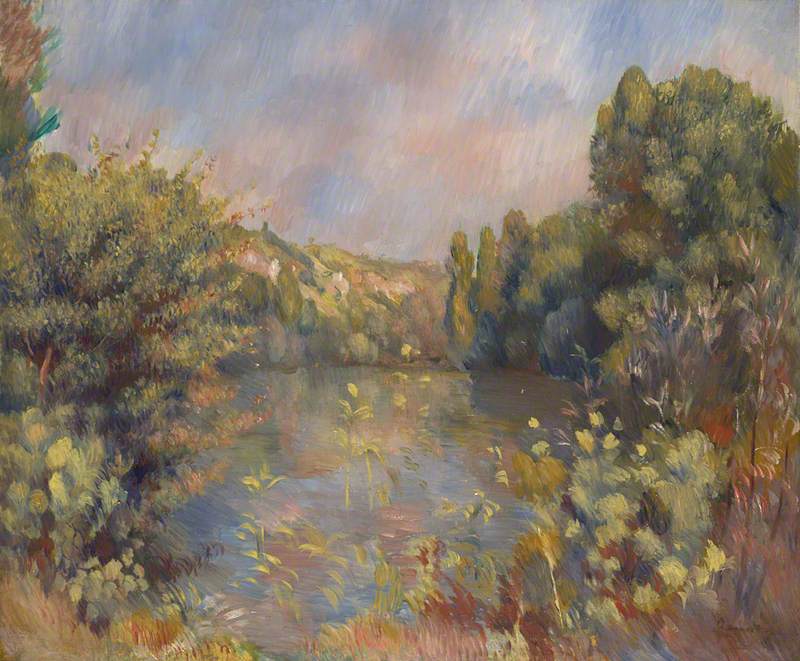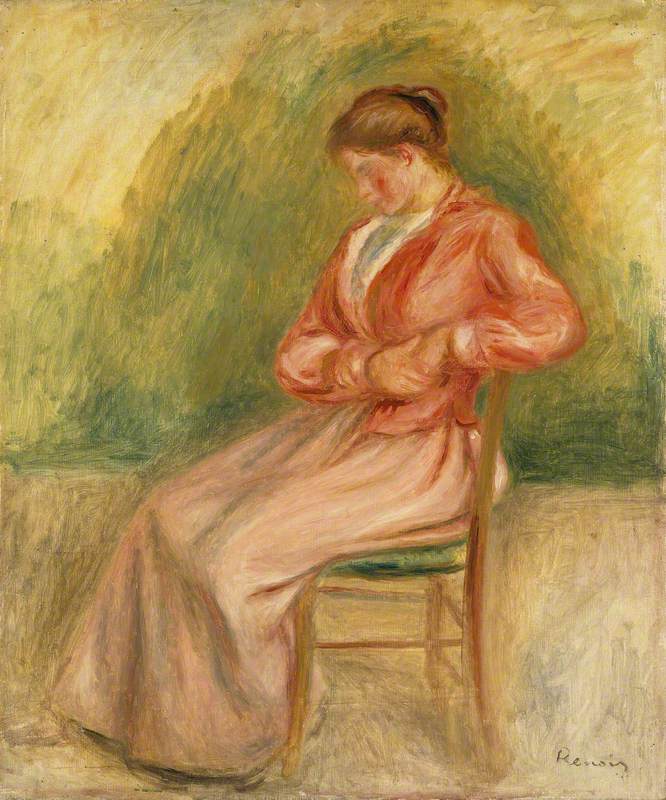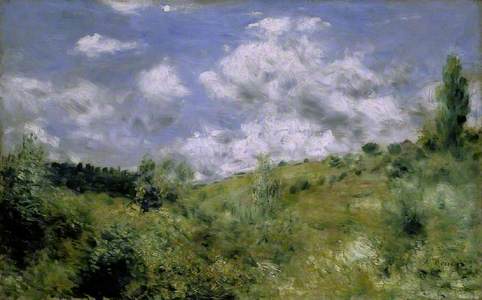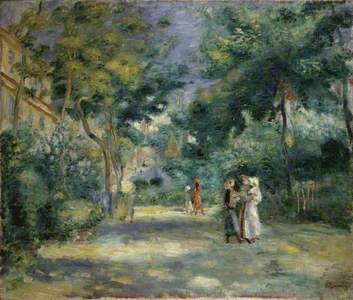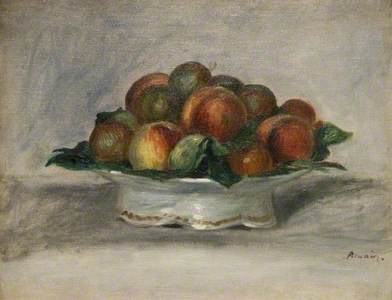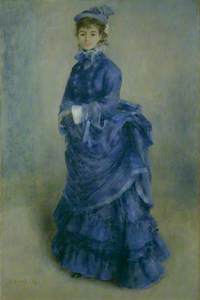For the past century, the French Impressionist painter Pierre-Auguste Renoir (1841–1919) has been one of the most lauded and respected painters in history.
In the decades following his death, dealers, museums and collections competed to acquire his paintings, the Nazis looted many of his works during wartime, and by the turn of the twenty-first century, he was mythologised in popular culture by films like Amelie, which featured his famous Luncheon of the Boating Party.
Luncheon of the Boating Party
1880–1881, oil on canvas by Pierre-Auguste Renoir (1841–1919) 
But in recent years, Renoir's reputation has been tarnished with accusations of misogyny. On top of this, his trademark style is viewed as less than favourable.
The artist's brushstrokes, once considered expressive, are now viewed as 'ponderous staginess', according to the New York Times art critic Roberta Smith. His sentimental subject matters, once deemed charming, now nauseate people with their syrupy, saccharine qualities.
Twenty-first-century internet culture has playfully rallied against Renoir, exemplified most emphatically in Max Geller's Renoir Sucks At Painting, an Instagram account which snowballed into a quasi-serious protest movement named 'God Hates Renoir'. In 2015, anti-Renoir 'activists' could be seen standing outside American national museums to protest the artist's inclusion in their collections (don't they have anything better to do?).
A century on from his death, let's try to understand why one of the most celebrated painters in art history became one of the most derided.
Born in Limoges, France, in 1841 to a working-class family, Renoir moved to Paris as a child. As a teenager, he showed immense talent as an artist and quit formal education to become an apprentice in the Lévy Frères porcelain-painting company.
In 1862 he entered the École des Beaux-Arts and later worked in the studio of Charles Gleyre. It was in Gleyre's studio where he first came into contact with some of the other artists who would come to define Impressionism – Alfred Sisley, Claude Monet and Frédéric Bazille.
But Renoir's initial years as an artist weren't easy.
In 1864, he submitted his first work to the Paris Salon – Esmeralda Dancing with her Goat, which he destroyed despite the fact that it was formally accepted. Three years later, Renoir submitted the paintings Diana and Women in the Garden, both of which were rejected.
Throughout the 1870s and 1880s, Renoir began experimenting with new methods of painting: impasto brushstrokes; bold combinations of pure complementary colours, and fragmented dapples of light.
Around the same time, Renoir's subject matter began to evolve to reflect a new modern Paris – cosmopolitan men and women enjoying café culture, people striding up and down Haussmann's wide boulevards recently created under Napoleon III, and the bourgeoise classes sojourning in the countryside.
In 1874, a few years after serving in the Franco-Prussian War, Renoir joined and exhibited with the 'Anonymous Society of Painters, Sculptors, Printmakers', a group later known as the 'Impressionists'.
By the time Renoir died in 1919 at the age of 78, he was one of the leading European artists of the Impressionist era. Many critics and art historians lauded him as an artistic 'innovator', praising his use of colour, brushwork and subject matter.
In the following decades, Renoir's popularity persisted, though he was never critically examined by the art historical community as much as his peer, Claude Monet (1840–1926).
Still Life of Roses in a Vase
1880s and 1890s
Pierre-Auguste Renoir (1841–1919) 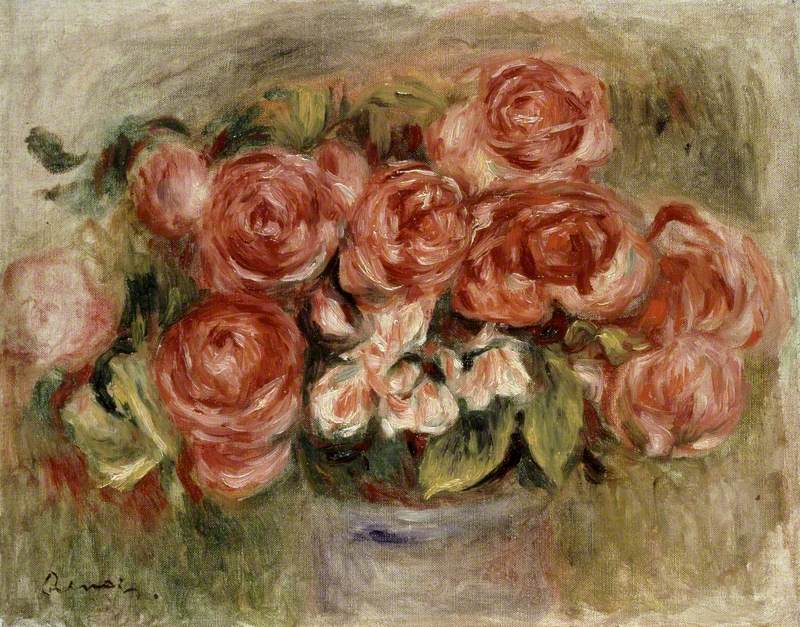
So when did rumblings about Renoir's merit as a painter first emerge? And has the predominantly online rebuke of the French Impressionist had any impact IRL (in real life)?
In truth, Renoir was detested by many during his own lifetime – even after finding recognition and success.
In 1876, the critic Albert Wolff wrote in Le Figaro: 'Would someone kindly explain to M. Renoir that a woman's torso is not a mass of decomposing flesh.'
Acknowledging this fact, the 2016 exhibition 'Renoir: Revered and Reviled' at the Barnes Foundation in Philadelphia considered the extreme and contrasting reactions to Renoir's art, both in history and today.
Below is a trailer of the eponymous film made by Exhibition on Screen.
Considering the long-lasting hostility towards the artist, an article published in The Atlantic noted the ostensible lack of new Renoir exhibitions, declaring: 'Any institution foolhardy enough to do so knows by now to expect some kind of pushback because everyone hates Renoir, and everyone always has.'
It is true that relatively few museums outside of France are choosing to celebrate Renoir.
This indifference or 'cancellation' of Renoir doesn't solely come down to a dislike of his painterly style, but is symptomatic of today's politically correct, identity-orientated culture, in which many an eyebrow is raised over white male artists who once obsessively painted nude women.
Recently, the New Yorker art critic Peter Schjeldahl published an article titled 'Renoir's Problem Nudes', which argued that although we may question the effectiveness or purpose of 'cancel culture', Renoir shouldn't be quickly excused for his sexism.
He said: 'an argument is often made that we shouldn't judge the past by the values of the present, but that's a hard sell in a case as primordial as Renoir's.'
Other art historians have taken a slightly different approach to understand the contemporary hostility towards Renoir, one which considers the whimsical nature of the Impressionists' subject matters.
Martha Lucy, writing for the Clark Art Institute's exhibition catalogue for 'Renoir: The Body, The Senses', declared: 'Pleasure, once celebrated, now sets off alarm bells. It must mean kitsch, or misogyny, or bourgeois blandness, or – even worse – that we are not serious viewers of art.'
Corroborating this comment, Renoir once said: 'Why shouldn't art be pretty? There are enough unpleasant things in the world.'
An artist who adopted the approach of the 'flanêur' – a term coined by Charles Baudelaire to describe a leisurely observer of modern life – Renoir was quintessentially a product of his time. He came to prominence in an era of expanding bourgeoise classes, leisure activities and an artistic preference for the mundane, everyday subject matter.
Although uncomfortable by today's standards, this epoch was characterised by the tendency for male artists to voyeuristically paint nude women – sleeping, bathing or listlessly lying on chaise longues, perhaps exemplified by the expression 'draw me like one of your French girls' (from the film Titanic).
Ironically, in the context of a politically 'woke' age, Renoir's apolitical art has been politicised by a discontented community of art lovers, who have little time for a genre that doesn't speak to their view of the world, i.e. that we are facing a pressing political situation.
In their eyes, to make matters worse, President Trump is reportedly a huge fan of Renoir and claims to own one of his paintings (though the attribution has been disputed).
The displeasure with Renoir goes far beyond aesthetic taste, but rather touches on issues to do with our zeitgeist, in which fluffy subject matters depicting bygone joyous eras feel out of place, and out of touch, in our contemporary malaise.
Lydia Figes, Content Creator at Art UK
Further reading
Roberta Smith, 'When Renoir Left the Parlour for Fresh Air', The New York Times, 2007
Kriston Capps, 'Why Absolutely Everyone Hates Renoir', The Atlantic, 2015
Marissa Fessenden, 'Why does the Internet Hate Renoir?', The Smithsonian, 2015
Jonathan Jones, 'To all you Renoir haters; he does not 'suck at painting'', The Guardian, 2015
Peter Schjeldahl, 'Renoir's Problem Nudes', The New Yorker, 2019
Robert Tracinski, 'Renoir Is Cancelled: Identity politics didacticism is taking over the art world', The Bulwark, 2019





